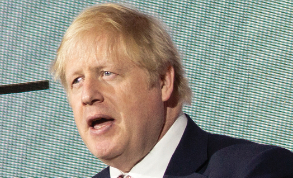Three-year funding rise for health and social care
 Having announced an additional £5.4bn for the NHS in the second half of the current financial year, the government unveiled its long-awaited plan, which seeks to recover the NHS elective backlog that has grown during the Covid pandemic and reform social care. Prime minister Boris Johnson (pictured) said the measures include £36bn in additional health and care spending over the next three years. The spending will be paid for with a 1.25 percentage point increase in National Insurance from April 2022 – which will subsequently become a health and care levy on earnings from 2023 – and a 1.25 percentage point increase in dividend tax rates.
Having announced an additional £5.4bn for the NHS in the second half of the current financial year, the government unveiled its long-awaited plan, which seeks to recover the NHS elective backlog that has grown during the Covid pandemic and reform social care. Prime minister Boris Johnson (pictured) said the measures include £36bn in additional health and care spending over the next three years. The spending will be paid for with a 1.25 percentage point increase in National Insurance from April 2022 – which will subsequently become a health and care levy on earnings from 2023 – and a 1.25 percentage point increase in dividend tax rates.
The £36bn figure includes additional funding for health and social care in England, plus the Barnett consequentials for the devolved administrations. Overall health and social care resource spending across the UK will increase in each of the three years by £13.3bn, £10.7bn and £12bn.
The NHS England share of the £36bn totals £15.8bn over the three years, with social care receiving £5.4bn. Estimated Barnett consequentials funding for the devolved administrations comes to £5.7bn over three years, and the non-NHS England and NHS Improvement budget will receive around £10bn.
In 2022/23, NHS England funding will increase by £6.6bn compared with 2021/22, to £149.4bn. There will be a further £3.6bn in 2023/24 (increasing the budget to £154.9bn), and £5.6bn (£160.1bn) in 2024/25.
The Barnett consequentials will mean Scotland will benefit from an extra £1.1bn, Wales £700m and Northern Ireland £400m in 2022/23 – the figures include Barnett funding from today’s announcement and planned UK-wide spending such as on vaccines.
Employer costs
As well as increasing funding for health and social care, the levy will raise employer costs across the public sector, including in the NHS. The government said it planned to compensate public sector employers. It is estimated this will cost around £1.7bn a year.
The government plan, Building back better: our plan for health and social care, broke down some of the figures. The plan for healthcare has three prongs – tackling the elective backlog, putting the NHS on a sustainable footing, and increasing the focus on prevention. (The HFMA has produced a summary of the government's document.)
The plan said the NHS would receive about £9bn over three years to address elective waiting times. Together with the £1bn for elective recovery set out in the one-year spending review in 2020, this could mean an additional nine million ‘checks, scans and procedures’. The NHS could aim to deliver 30% more activity by 2024/25, compared with pre-pandemic levels.
In addition, to increase elective capacity, there will be a £250m Elective Recovery Technology Fund, while a further £250m will be allocated to increase operating theatre capacity and improve hospital productivity. NHS England and NHS Improvement will set out how greater efficiency and reform will maximise the use of funding.
Prevention must be a central principle of a sustainable service, the plan said, adding that it will be at the heart of the work of two new bodies, the Office for Health Improvement and Disparities, and the Health Security Agency. NHS England and NHS Improvement will be required to introduce a yearly prevention spend, outcome and trajectory reporting criteria. These will include an assessment of the 10-year spend and outcome trajectories (what will happen to patients over the decade following diagnosis) of the major preventable diseases such as diabetes.
Adult social care will receive an additional £5.4bn over three years to fund social care payment reforms. The changes set the maximum lifetime cost in England to £86,000. The state will meet all care costs for those with assets of less than £20,000. People with assets of between £20,000 and £100,000 will contribute to the cost of their care, though this will be means-tested. The current upper asset limit is £23,250.
A white paper will be developed, with a focus on incentivising adult social care integration with the local NHS, together with client choice, control and independence; improvements in care quality; and ensuring care is fair and accessible.
And £500m over three years will be allocated to professionalising and developing the social care workforce, funding wellbeing resources, and increasing recruitment.
Mr Johnson said: ‘You can’t fix the Covid backlogs without giving the NHS the money it needs. You can’t fix the NHS without fixing social care, you can’t fix social care without removing the fear of losing everything to pay for it, and you can’t fix health and social care without long-term reform. The plan I am setting out today will fix all of these problems together.’
 Natasha Curry (pictured), Nuffield Trust deputy director of policy, said social care had a right to feel disappointed.
Natasha Curry (pictured), Nuffield Trust deputy director of policy, said social care had a right to feel disappointed.
‘After decades of dangerous delay, the broken social care sector will be feeling short-changed and bitterly disappointed at the proposed funding levels and timing of reform today.
‘The proposed £36bn across three years raised by a dedicated health and social care levy has the potential to provide the substantial funds needed for comprehensive reform. But for the next three-year period at least, the vast majority of funds, over £30bn, will go directly to the NHS to help clear the frightening backlog of operations and treatments postponed by the pandemic.
‘While the decision to raise taxes for social care is bold and welcome action, the reality is the money left for social care (£5.4bn over three years) will only go some of the way to stabilise a dire situation and leaves little for meaningful change.’
She added that it would be difficult to take away funding from the NHS in later years.
While welcoming the announcement, King’s Fund chief executive Richard Murray said ‘a large dose of realism is needed in terms of what this money will be able to deliver and how fast’. Social care had no guarantee of sustainable funding beyond 2024/25, while the lifetime cost ceiling would help relatively few people.
He added: ‘It is important to be realistic about how quickly the service can clear the waiting list. While we have yet to see the finer detail of the settlement, whether this funding can be put to the best use critically depends on developing a plan to address chronic workforce shortages. Public expectations will rise with their taxes and the government must be honest about how long it will take to recruit and train enough staff to provide the tangible improvements to NHS care they will expect.’
Source: Our plan for health and social care, page 30
The HFMA has produced a summary of Build back better: our plan for health and social care.
Related content
We are excited to bring you a fun packed Eastern Branch Conference in 2025 over three days.
This event is for those that will benefit from an overview of costing in the NHS or those new to costing and will cover why we cost and the processes.